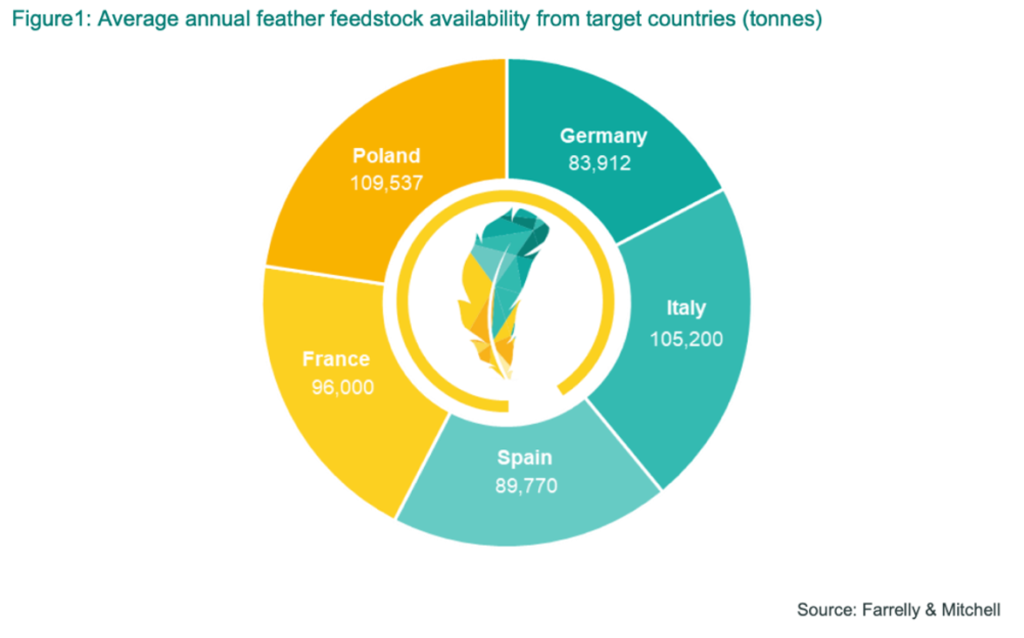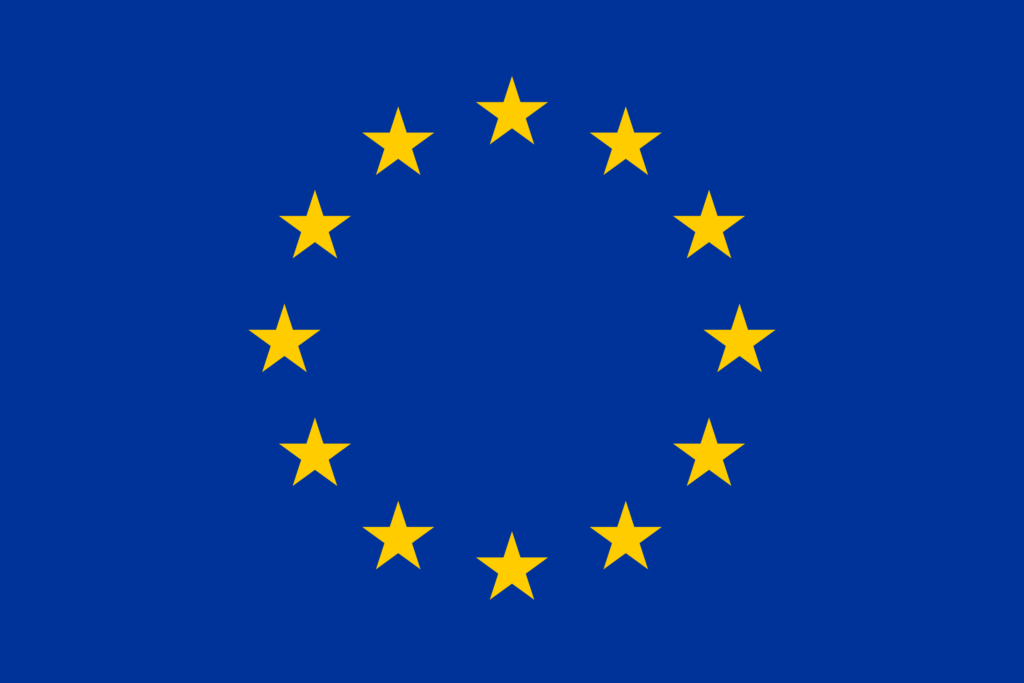
Menu

The first three public Deliverables from the UNLOCK project are now available, bringing first results to the public and stakeholders. The Deliverables, produced by Farrelly & Mitchell Consultants and available in Resources, explore feather waste availability, the feather-based economy, and feather supply chains.
D2.1 – Analysis of feather waste sources and management in the EU
This first report provides an overview of the poultry breeding, meat processing and animal by-product (ABP) rendering industries in UNLOCK’s five target countries: France, Germany, Italy, Poland and Spain. It shows that poultry meat production at the EU level was 13.6 million tonnes in 2020, with 67% from the target countries, with the industry averaging more than 620,000 tonnes of feathers per year (480,000 in the target countries, all demonstrating significant growth from 2010-2020).

The analysis also explores the number of ABP renderers, finding only a small portion of total licensed establishments are handling feathers or feather-related products (0.5-3.98% across the target countries), highlighting the potential and need for further implementation of specialised entities managing poultry feather waste in the EU, and enabling a bio-based economy. Find out more in D2.1.
D2.3 – EU’s feather-based economy: The challenges ahead
The next deliverable explores supply chain hurdles in feather value chains, such as logistics, infrastructure, quality feather availability and legislation, and puts forward mitigation strategies to minimise identified obstacles. A traffic light system is used to highlight the difficulty of overcoming hurdles, as well as their threat to the value chain.

The report concludes that:
D3.2 – Report on supply chain solutions for the main scenarios detected in the target countries
This deliverable focuses on some of the possible solutions to challenges identified in D2.3 and proposes scenarios along the value chain where these challenges may be encountered. It proposes solutions reliant on innovation by actors in the value chain, modification of existing solutions, and use of existing support, grants and financing schemes.



This project has received funding from the Bio-based Industries Joint Undertaking under the European Union’s Horizon 2020 research and innovation programme under grant agreement Nº 101023306.
This site is licensed under Creative Commons
Attribution-NonCommercial-ShareAlike 4.0 International (CC BY-NC-SA 4.0).
Website designed and coded by Fastlane